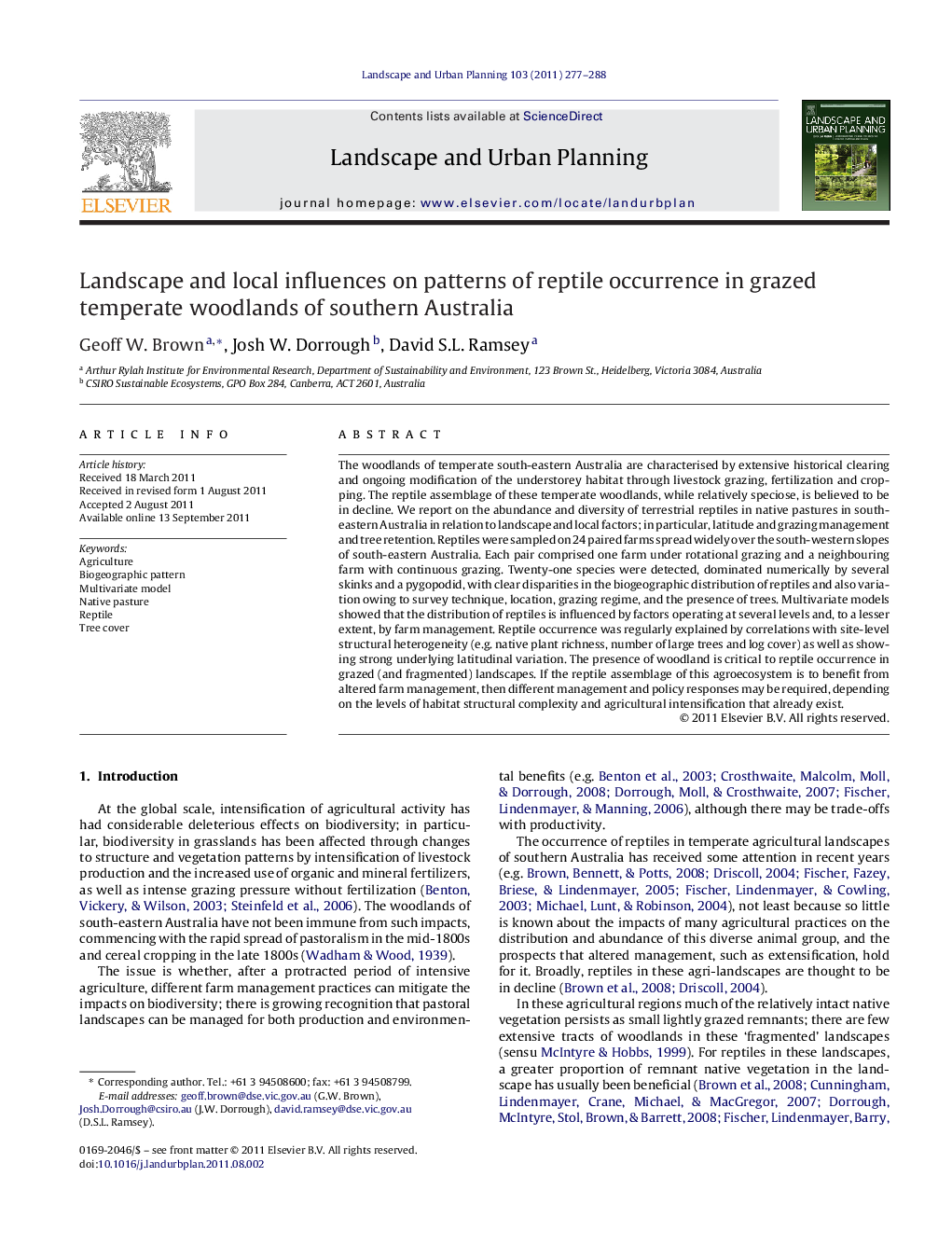| Article ID | Journal | Published Year | Pages | File Type |
|---|---|---|---|---|
| 1049638 | Landscape and Urban Planning | 2011 | 12 Pages |
The woodlands of temperate south-eastern Australia are characterised by extensive historical clearing and ongoing modification of the understorey habitat through livestock grazing, fertilization and cropping. The reptile assemblage of these temperate woodlands, while relatively speciose, is believed to be in decline. We report on the abundance and diversity of terrestrial reptiles in native pastures in south-eastern Australia in relation to landscape and local factors; in particular, latitude and grazing management and tree retention. Reptiles were sampled on 24 paired farms spread widely over the south-western slopes of south-eastern Australia. Each pair comprised one farm under rotational grazing and a neighbouring farm with continuous grazing. Twenty-one species were detected, dominated numerically by several skinks and a pygopodid, with clear disparities in the biogeographic distribution of reptiles and also variation owing to survey technique, location, grazing regime, and the presence of trees. Multivariate models showed that the distribution of reptiles is influenced by factors operating at several levels and, to a lesser extent, by farm management. Reptile occurrence was regularly explained by correlations with site-level structural heterogeneity (e.g. native plant richness, number of large trees and log cover) as well as showing strong underlying latitudinal variation. The presence of woodland is critical to reptile occurrence in grazed (and fragmented) landscapes. If the reptile assemblage of this agroecosystem is to benefit from altered farm management, then different management and policy responses may be required, depending on the levels of habitat structural complexity and agricultural intensification that already exist.
► We investigated local and landscape influences on reptiles in agri-ecosystems. ► Reptiles have experienced an overall decline. ► Reptiles are influenced by various farm management and environmental factors. ► Reptile occurrence was regularly explained by site-level structural heterogeneity. ► The presence of woodland is critical to reptile occurrence in these landscapes.
